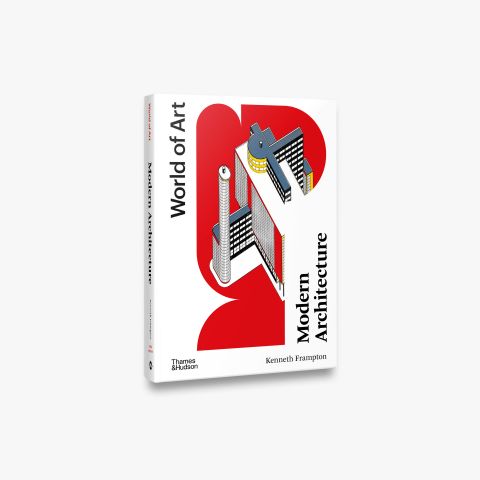上周,參加阮偉明老師的攝影展。對他說,他數天在京都捕捉到的,都是很難得的,連人孔蓋都超過近日出版的,日本各市鎮的man-hole 集錦.......
Modern Architecture: A Critical History by Kenneth Frampton
初版1980, 二版1985, 三版1992(376頁,362圖,$14.95), 四版 2007 (424頁,420圖,$19.27)
https://www.amazon.com/Modern-Architecture-Critical-History-Fourth/dp/0500203954
"One of the most important works on modern architecture we have today."―Architectural Design
This acclaimed survey of modern architecture and its origins has become a classic since it first appeared in 1980. For the fourth edition Kenneth Frampton has added a major new section that explores the effects of globalization on architecture in recent years and examines the phenomenon of international celebrity architects who are increasingly active all over the world. The bibliography has been updated and expanded, making this volume more complete and indispensable than ever. 420 illustrationsModern Architecture: A Critical History (Fourth Edition) (World of Art) Fourth Edition
- Series: World of Art
- Paperback: 424 pages
- Publisher: Thames & Hudson; Fourth edition (September 30, 2007)
*****
2020.9.8
The future of architecture in an ever-changing world
Posted on 05 Sep 2020
Renowned architect Professor Kenneth Frampton talks about the culture and relevance of architecture during these strange times.

Image: © University of Toronto Scarborough Library, Archives & Special Collections: UTSC Archives Legacy Collection, Series F. Photographs - Box 1 (File 5)
In your influential essay ‘Towards a Critical Regionalism’ you said that ‘Modern building is now so universally conditioned by optimized technology that the possibility of creating significant urban form has become extremely limited.’ Three decades later, we live even more so in a world of ‘optimised technology’. What is the way forward for architecture, in your opinion?
The predicament facing the culture of architecture today is intimately linked to our continuing failure to realise an ecological and socially valid pattern of land settlement so that unlike the long haul prior to the mass ownership of the consumerist automobile, we have lost our former capacity to realise spontaneously compact towns and villages. Hence the ultimately unsustainable chaos of unlimited suburban development and the reduction of contemporary building to the proliferation of freestanding objects irrespective of their intrinsic quality. The only remedial possibility today seems to reside in the field of landscape architecture rather than in architecture or urban design.
What is the relationship between critical regionalism and globalisation? In your view, does globalisation pose a threat to the vibrancy of architecture and local cultures?
Clearly globalisation has been detrimental to the cultivation of local building culture by virtue of the branding of star architects who travel all over the world to design the prerequisite spectacular works, invariably indifferent to the specific climate and culture in which the buildings are situated.

Image: © Timo Christ/Alamy Stock Photo
COVID-19 has forced architects to confront new challenges and face new responsibilities. Some are now designing buildings with a view to social distancing and the possibility of future pandemics. What design opportunities do you see in an unprecedented era like this?
The pandemic is surely a dress rehearsal for the imminent emerging impact of climate change. ln the last analysis all of this is inescapably political! Architects need to recognise that our continuation with Neoliberal consumerist capitalism is totally unsustainable and that unless we return to the organizational capacity of the social democratic welfare state we have no hope of surviving as a species let alone as a profession.
The pandemic is surely a dress rehearsal for the imminent emerging impact of climate change. ln the last analysis all of this is inescapably political! Architects need to recognise that our continuation with Neoliberal consumerist capitalism is totally unsustainable and that unless we return to the organizational capacity of the social democratic welfare state we have no hope of surviving as a species let alone as a profession.
You’ve spoken about the importance of touch and tactile elements in architecture. Why is this significant?
The tactile dimension is a crucial aspect of architecture in as much as all building presupposes an intimate phenomenonlogical relationship between the body-being and built form. The social accessibility of architecture ultimately depends on its capacity to address all the senses.

Image: © Courtesy Aman Resorts, aman.com
You’ve written on the architect Le Corbusier. What is his legacy, and why has he remained so influential?
Le Corbusier has remained influential because of the breadth and depth of his creativity and thought. For example his The Three Human Establishments of 1945 is in some respects as valid today as when it was first written. Like Álvaro Aalto’s plan for lmatra of virtually the same date it envisages a dense pattern of regional urbanisation in which industry, agriculture and habitation are fused together, in a densely continuous fabric.
How would you compare the architectural sensibilities of the UK and your adopted United States?
It is possible to discern a pattern of architectural culture which rises and falls across time. In the 30s and 40s, Frank Lloyd Wright created a comprehensive environmental culture for the US and we may say that this and the Case Study Houses were the last serious attempts to render the American suburb as a place of culture. Despite the vision of C.F.A. Voysey, the English Garden City movement was incapable of serving as a comparable model. After World War 2, the successive manifestations of Brutalism and the triumphant Anglo-Italian Hi-Tech architecture was not transferable to the US.


沒有留言:
張貼留言